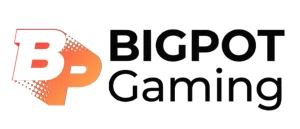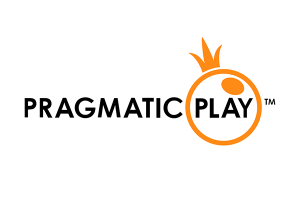
Selamat datang di situs kami, sumber terbaik untuk informasi tentang provider slot online terbaik saat ini! Siapa saja pasti menikmati bermain slot online dan kami yakin Anda pun termasuk. Apalagi karena hadiahnya adalah uang asli yang langsung dikirim ke rekening atau dompet digital Anda. Ada banyak provider slot online, sehingga ada begitu banyak judul yang tersedia untuk dimainkan. Kali ini, kami mengundang Anda untuk menguji keberuntungan di slot Spadegaming Three Lucky Stars. Jika Anda ingin tahu lebih banyak tentang provider Spadegaming dan judul slot online ini, jangan lewatkan informasi berikut.
Menjelajahi Provider Slot Spadegaming
Sejak didirikan pada tahun 2007, Spadegaming telah menjadi salah satu provider slot online terpercaya. Pada saat itu, internet belum sepopuler sekarang dan permainan slot dari provider spadegaming belum begitu populer. Namun, mereka tidak menyerah dan terus berkembang, menciptakan banyak judul permainan yang menarik untuk dinikmati oleh pemainnya.
Pada tahun 2013, provider Spadegaming memutuskan untuk mengadopsi sistem HTML5. Dengan semakin populernya agen permainan slot ini, namanya semakin melambung di kalangan pecinta taruhan. Kini, kegigihan agen permainan slot tersebut terbukti dengan memiliki banyak member setia yang tetap mendukung dan bermain hingga saat ini.
Seiring berjalannya waktu, Spadegaming terus berkembang dan memperbarui sistemnya menjadi lebih canggih. Mereka juga merilis banyak slot spadegaming dan mendapatkan lisensi resmi dari organisasi pengawas taruhan. Dengan adanya lisensi ini, pemain dapat yakin bahwa putaran permainan yang ditawarkan adalah adil dan bebas dari kecurangan.
Jadi, jika agen slot spadegaming telah memiliki lisensi, Anda dapat mempercayai bahwa agennya aman dan terpercaya.
Pelajari Slot Online Three Lucky Stars
Slot Spadegaming, Three Lucky Stars, mengusung tema Asia dan menawarkan satu payline untuk pemain. Dengan tiga simbol utama yang mewakili simbol kemenangan instan, pemain dapat memenangkan hadiah maksimal x300 atau bahkan mencapai nilai fantastis x135.000 jika berhasil menggabungkan ketiga simbol tersebut. Jadi, jangan lewatkan kesempatan untuk memenangkan hadiah besar di game ini!
Tema Slot Online Spadegaming Three Lucky Stars
Setiap game slot Spadegaming memiliki cerita yang menginspirasi pembuatannya. Three Lucky Stars menceritakan tentang tiga dewa yang melambangkan keberuntungan, kemakmuran, dan umur panjang. Dalam game ini, Anda dapat menikmati simbol tersebut yang mewakili keberuntungan, kesehatan, dan uang.
Dengan desain yang sederhana, game slot Spadegaming menampilkan latar belakang merah dengan sentuhan awan emas di bagian bawahnya. Warna emas juga ditemukan pada gulungan permainan. Namun, yang membuatnya unik adalah keberadaan tiga sosok three lucky stars yang nampak mengawasi jalannya permainan di atas meja. Permainan ini terdiri dari 3 gulungan dan 2 baris, memberikan pengalaman bermain yang menarik bagi para pemain.
Cara Bermain Game Slot Three Lucky Stars dari Spadegaming
Tombol permainan terletak di bawah gulungan dan memberi Anda kendali penuh atas jumlah taruhan Anda. Anda dapat memasang taruhan mulai dari 0,20 hingga 450,00 dengan menggunakan tombol plus dan minus. Pilihlah tingkat taruhan yang cocok untuk Anda sebelum memutar gulungan dan menikmati permainan!
Di sebelah kanan layar, pemain akan menemukan tombol besar untuk memutar gulungan. Di sampingnya, ada juga tombol untuk mode putaran otomatis yang dapat diatur mulai dari lima putaran hingga tanpa batas. Jika ingin mempercepat kecepatan putaran, cukup tekan tombol turbo yang terletak di sebelah kiri tombol spin.
Jangan lupa untuk menekan tombol ‘i’ saat bermain game slot Three Lucky Stars dari Spadegaming untuk melihat aturan permainan dan tabel pembayaran.
Konklusi
Game slot Three Lucky Stars dari provider Spadegaming telah menerima banyak pujian dari para penggemar taruhan. Dengan layout permainan sederhana 3×2, Anda dapat dengan mudah meraih kemenangan. Selain itu, belum banyak orang yang mencoba game ini. Jadi, ayo segera coba game slot online Spadegaming yang satu ini dan menjadi bintang di antara pemain lainnya!








 3. Playtech: Provider ternama lainnya adalah Playtech, dengan koleksi game lengkap mulai dari slot hingga live casino. Keberagaman tema dan tampilan visual yang mengesankan menjadikan permainan mereka sangat diminati oleh para pemain.
3. Playtech: Provider ternama lainnya adalah Playtech, dengan koleksi game lengkap mulai dari slot hingga live casino. Keberagaman tema dan tampilan visual yang mengesankan menjadikan permainan mereka sangat diminati oleh para pemain.